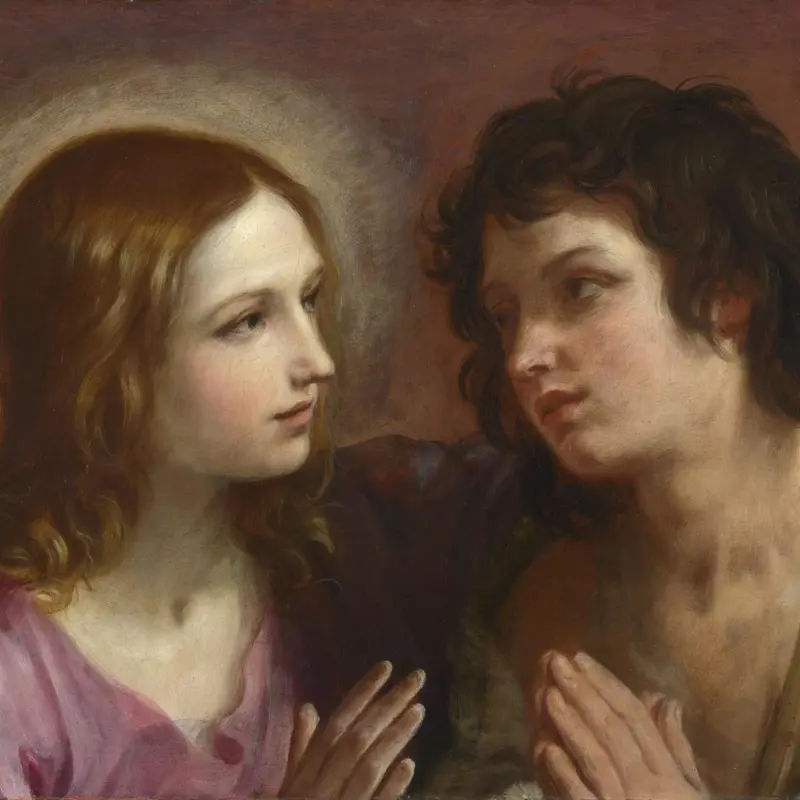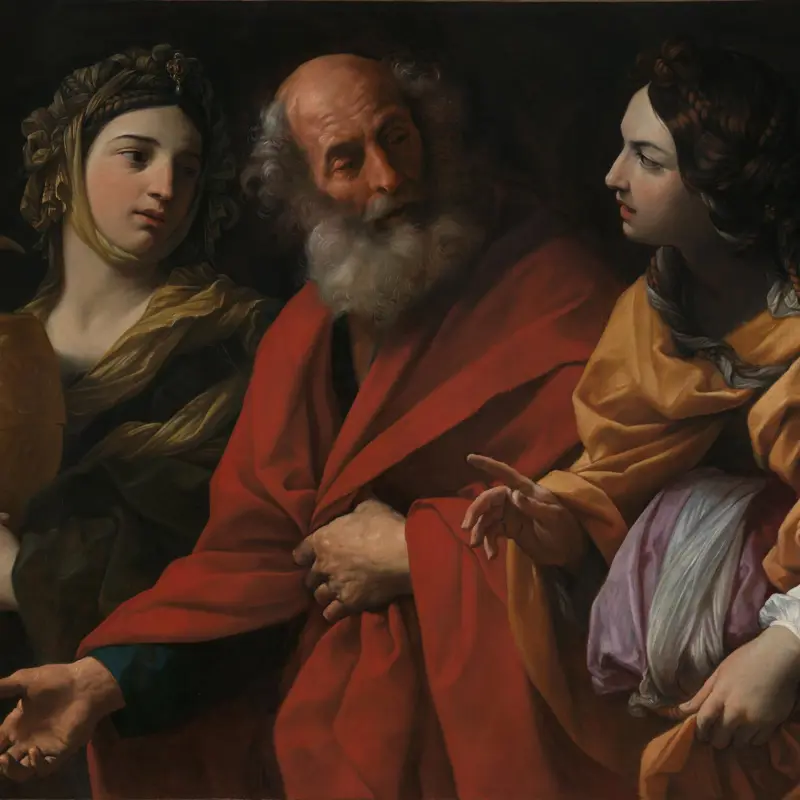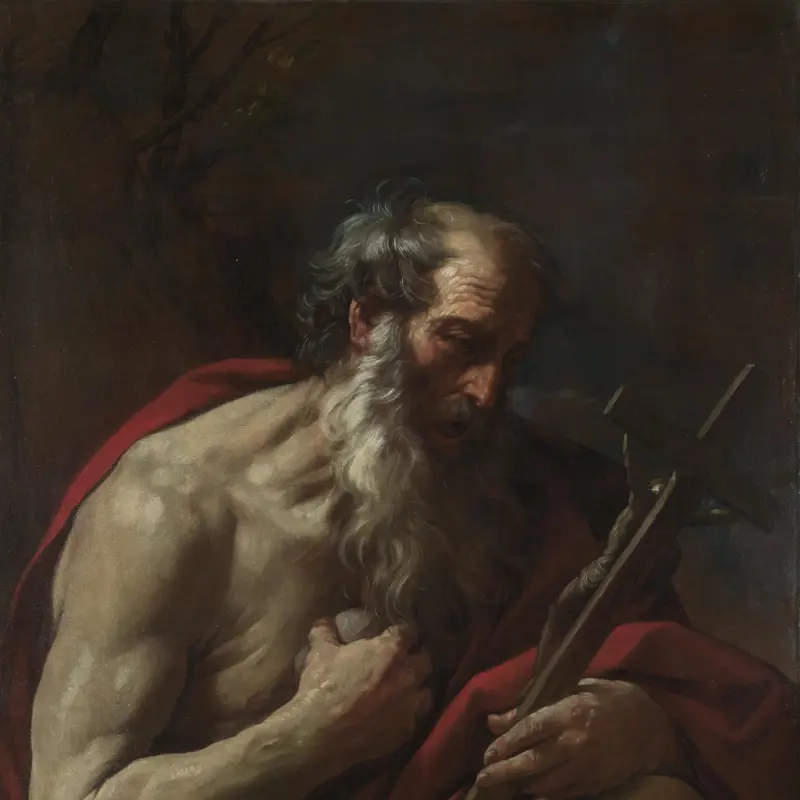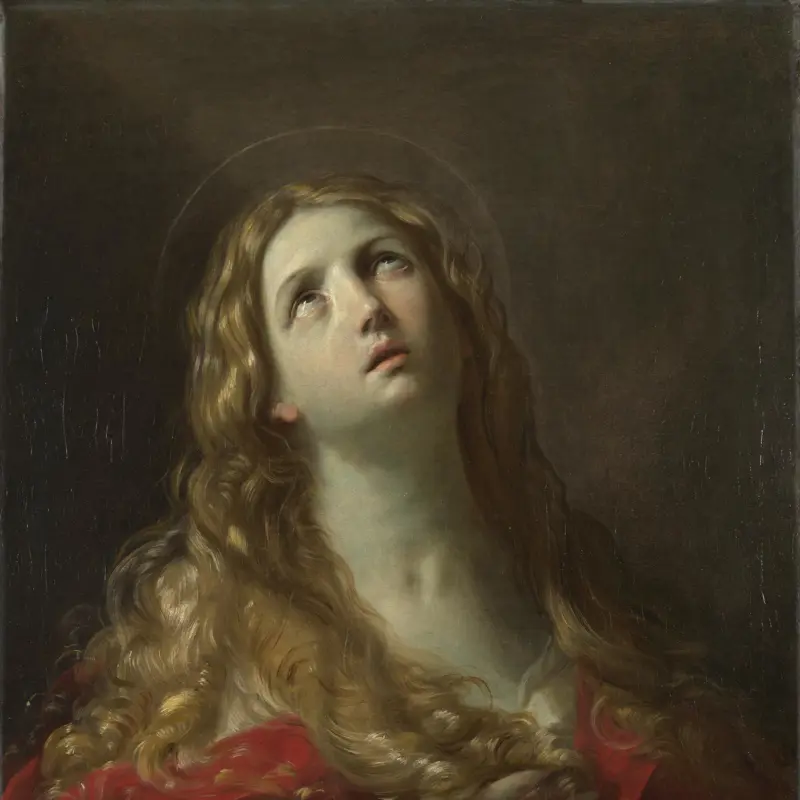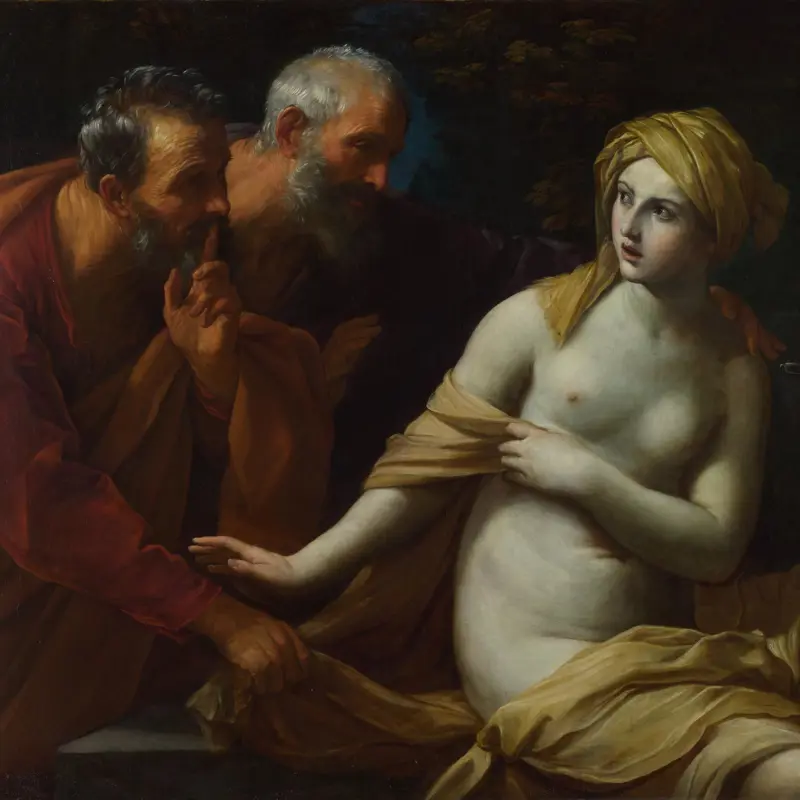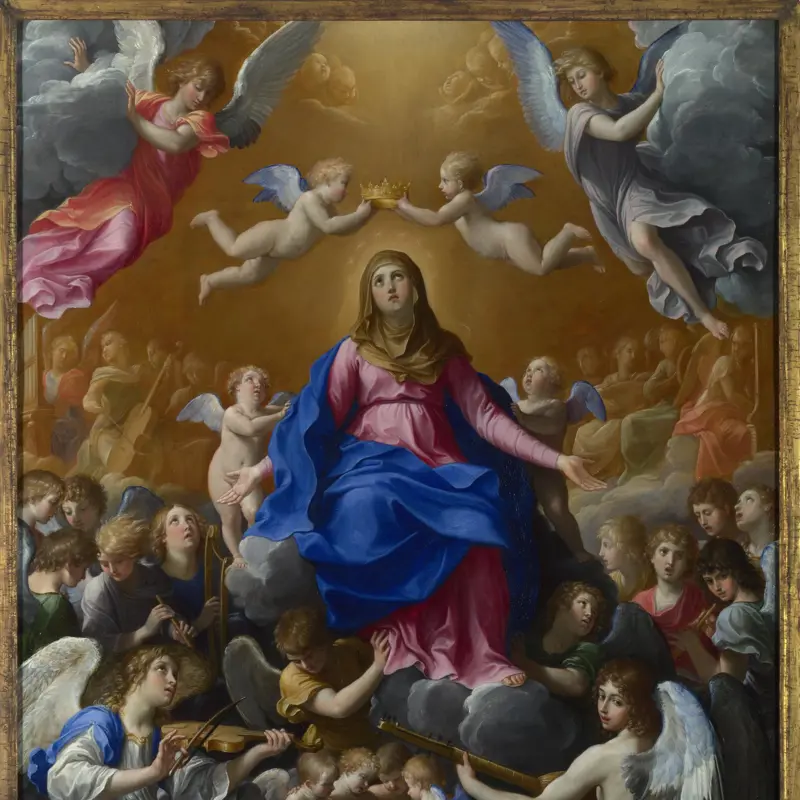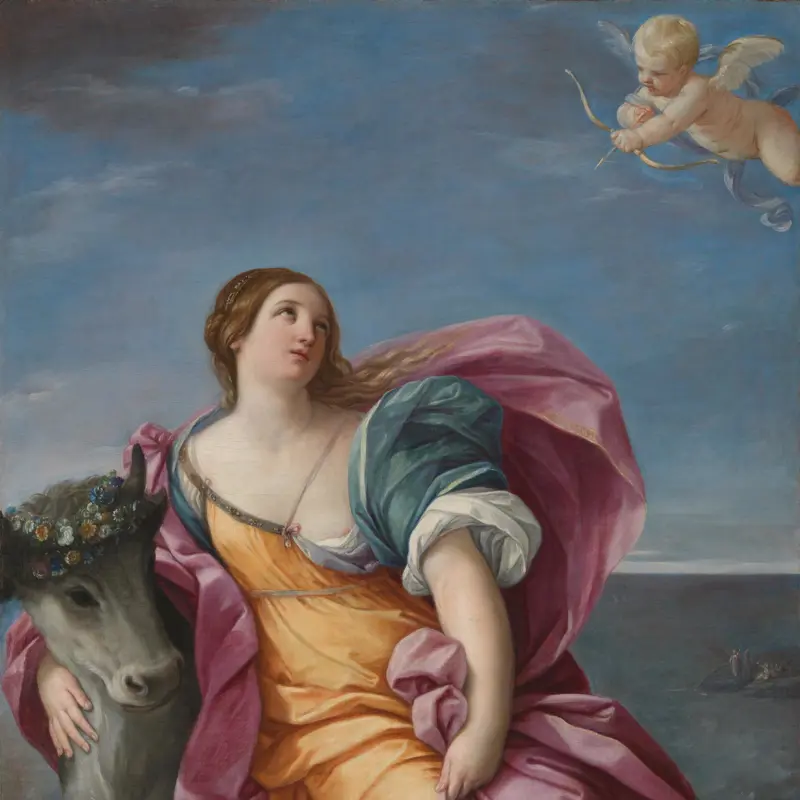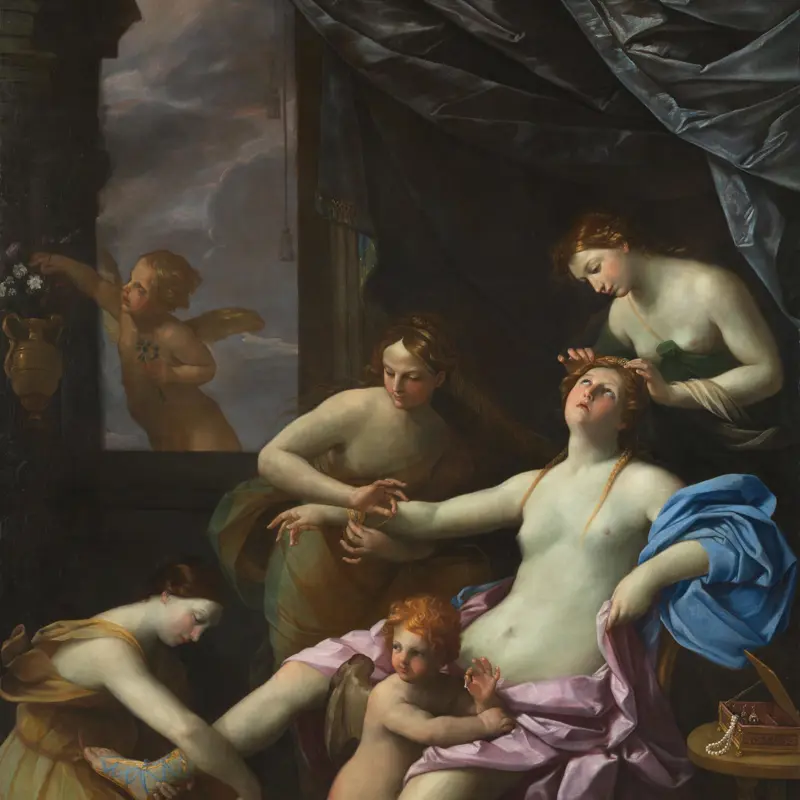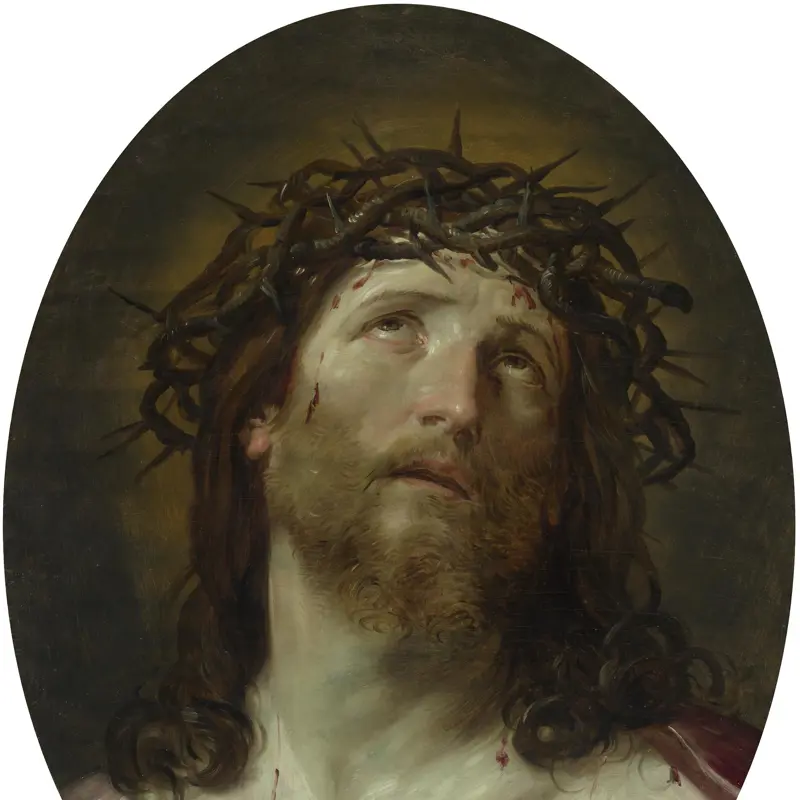After Guido Reni, 'Perseus and Andromeda', 1635-1700
About the work
Overview
In this scene inspired by Ovid’s Metamorphoses, Andromeda, daughter of the Ethiopian queen Cassiope, is about to be sacrificed to placate a monster summoned by Neptune, god of the sea. The hero Perseus appears at top left on his winged horse Pegasus, preparing to kill the monster and rescue the distressed princess. Andromeda is depicted naked, though a swirling cloak preserves her modesty.
This work is a copy, with some variations, after Guido Reni’s painting of about 1635 (Pallavicini Collection, Rome). It was probably made in the latter half of the seventeenth century and deviates from the Pallavicini painting most notably in the position of Perseus‘ right arm. In Reni’s original, Perseus’ arm is drawn across his body; here, it is raised to strike the sea monster. It was not unusual for copyists to make alterations to the compositions they were replicating, and they often did so at the request of their clients.
Key facts
Details
- Full title
- Perseus and Andromeda
- Artist
- After Guido Reni
- Artist dates
- 1575 - 1642
- Date made
- 1635-1700
- Medium and support
- oil on canvas
- Dimensions
- 280 × 205.7 cm
- Acquisition credit
- Presented by William IV, 1836
- Inventory number
- NG87
- Location
- Not on display
- Collection
- Main Collection
- Previous owners
Provenance
Additional information
Text extracted from the ‘Provenance’ section of the catalogue entry in Michael Levey, ‘National Gallery Catalogues: The Seventeenth and Eighteenth Century Italian Schools’, London 1986; for further information, see the full catalogue entry.
Bibliography
-
1742G. Bickham, Deliciae Britannicae or the Curiosities of Kensington Palace, Hampton Court, and Windsor Castle, 2nd edn, London 1742
-
1761London and Its Environs Described: Containing an Account of Whatever is Most Remarkable for Grandeur, Elegance, Curiosity or Use, in the City and in the Country Twenty Miles around it, 6 vols, London 1761
-
1766T. Martyn, The English Connoisseur, London 1766
-
1819W.H. Pyne, History of the Royal Residences, London 1819
-
1842Mrs Jameson, A Handbook to the Public Galleries of Art in and Near London, London 1842
-
1843F. Summerly, Felix Summerly's Hand Book for the National Gallery, London 1843
-
1845G. Foggo, A Catalogue of the Pictures in the National Gallery with Critical Notes, London 1845
-
1927P. Toynbee, 'Horace Walpole’s Journals of Visits to Country seats, &c.', The Walpole Society, vol. 16, 1927-28, pp. 9-80
-
1933G. Vertue, 'Vertue Note Books, III', The Walpole Society, XXII, 1934
-
1937O. Kurz, 'Guido Reni', Jahrbuch der Kunsthistorischen Sammlungen in Wien, II, 1937, pp. 189-220
-
1955O. Kurz, Bolognese Drawings of the Xvii and Xviii Centuries at Windsor Castle, London 1955
-
1958A. Bertini, I disegni italiani della Biblioteca reale di Torino, Rome 1958
-
1966Ovid, Metamorphoses, ed. F.J. Miller, London 1966
-
1971E. Baccheschi, L'opera completa di Guido Reni, Milan 1971
-
1971M. Levey, The Seventeenth and Eighteenth Century Italian Schools, London 1971
-
1983D.S. Pepper, 'Bacchus and Ariadne in the Los Angeles County Museum', The Burlington Magazine, CXXV, 1983, pp. 68-75
-
1984D.S. Pepper, Guido Reni: A Complete Catalogue of His Works, Oxford 1984
-
1986Levey, Michael, National Gallery Catalogues: The Seventeenth and Eighteenth Century Italian Schools, London 1986
-
1988D.S. Pepper, Guido Reni: L'opera completa, Novara 1988
-
1996F. Siguret (ed.), Andromède, ou, Le héros à l'épreuve de la beauté: Actes du colloque international, Paris 1996
-
2001
C. Baker and T. Henry, The National Gallery: Complete Illustrated Catalogue, London 2001
About this record
If you know more about this work or have spotted an error, please contact us. Please note that exhibition histories are listed from 2009 onwards. Bibliographies may not be complete; more comprehensive information is available in the National Gallery Library.

